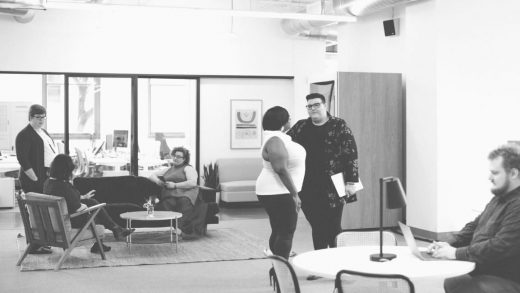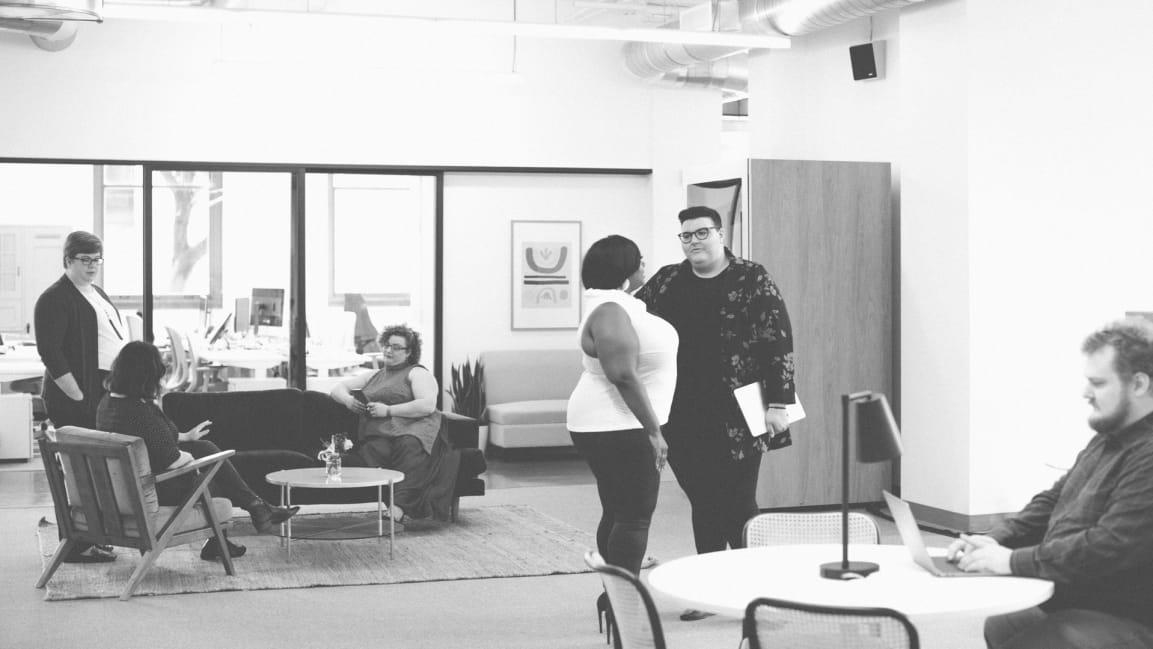5 ways your workplace isn’t accommodating to fat people
“Workplace culture comes from our larger culture, which certainly has a hierarchy around weight. Thinner people are seen as better,” says fat activist Marilyn Wann, author of Fat?So!: Because You Don’t Have to Apologize for Your Size. Wann says that fat people often face negative stereotypes, as well as environments and situations that range from unaccommodating to dangerous.
The Centers for Disease Control estimate that 42.4% of the American public was obese and 73.6% was overweight in 2017-2018—a significant part of the population. Being inclusive in a way that recognizes large people requires thinking about a number of areas. Here are some that are often overlooked:
Office
Companies that are serious about size inclusion should look at their facilities and workspaces, says Peggy Howell, vice chairman and public relations director of the National Association to Advance Fat Acceptance. Think about including seats without arms or a combination of typical chairs and bench seating to accommodate larger bodies.
The organization has created an HR guide and defines a “size-friendly” chair as one with a seat size of 22.25?w x 20.75?d and back size of 23?w x 23?h. Chair seats should height adjustable between 19.5? to 23.5? and should accommodate at least 450 lbs. Chairs that are too small for some employees will be a source of discomfort for them, and when employees exceed the weight limit for furniture, the results can be dangerous.
In today’s open space offices, flexible workspaces and clustered “huddle” areas are common, even if those are subject to social distancing requirements now. In addition, some offices have training areas. As offices plan the different types of work areas they need, Howell recommends that HR and office designers keep in mind accommodations for employees and customers of all sizes.
Swag
Self-proclaimed “HR geek” Maureen Hentz, vice president of human resources at A.W. Chesterton Company, an industrial equipment supplier, recalls when she became aware of the embarrassment that fat people face regularly. Her office was giving away T-shirts. “I can remember where I was standing and what I was doing when I first heard somebody say, ‘I’m not even going to go down because I know they won’t have my size,’” she says. “The purpose of company swag, right, you go back to a feeling of unity and inclusiveness and team. And if the person self-selects out because they think you haven’t considered them as people, what kind of message does that send?”
It was a light bulb moment and she vowed to make size inclusiveness a priority from that day forward. She says that she only works with clothing vendors who offer sizes up to 4x and invites employees to let her know if they have specific size requirements or if they want her to set aside a size they need if they’re afraid she might run out. Similar offerings should be made if employees are asked to wear specific uniforms, shirts, etc. And, if accommodating size isn’t possible, offer size-neutral options like cups or coolers.
Health and Wellness
When structuring office wellness programs, make them weight neutral, Wann says. There are wellness programs that target obesity and those that focus on activities that are more generally about health, such as walking, meditation, and eating vegetables. “But if a wellness program is structured to focus on weight outcomes, then that immediately makes fat people feel devalued, not seen as fully counting as an employee the way others do,” she says.
Health at Every Size has a variety of weight-neutral resources. Most of all, don’t make assumptions about health or fitness based on weight, Wann adds. And don’t encourage weight-loss competitions, which can be unhealthy. For offices that have nurses or health care offices onsite, be sure that scales can accommodate higher weights and that large-size blood pressure cuffs are available, Hentz says.
Travel and Events
For large employees, travel can be a challenge and put them in potentially embarrassing situations if they’re forced to purchase an extra seat or removed from a flight because of their size. Review the policies of your preferred carriers to ensure that they are accommodating to larger people, Hentz says.
Companies should cover additional charges that are necessary for larger people to travel safely, including purchasing an extra seat or covering a charge for a seat belt extender, and be explicit about those provisions in their travel policies.
If your company plans events or team-building exercises, be sure that they’re body-inclusive, Hentz adds. “A ropes course might be fun for larger sized people—but only if all the members of your team can comfortably and safely use the harness equipment at the facility you choose,” she says. If you choose an event that has a size or weight limitation, be sure to be very clear about that upfront. For example, larger people may not fit in go-carts or horseback riding excursions may have a weight limit. “Think about this when planning. It’s not much of a team-builder when two members of your team show up and feel bad about themselves because they don’t fit in the race cars,” she says.
Hiring and Pay
As you review your workplace for size inclusiveness don’t forget to examine pay and hiring practices. A 2018 LinkedIn study found that obese workers are paid roughly $2,500 less than thinner colleagues. And half of employers are less likely to hire obese employees than thinner employees. Howell says that bias against fat people in the workplace can be hurtful and make employees feel unwelcome and less engaged. In addition, such bias may run afoul of discrimination laws, says Brandie Sendziak, a disability attorney with Independent Living Resource Center San Francisco, a disability rights advocacy and support organization.
“Depending on the actual facts of the individual’s case and also depending on the location, there may be issues,” she says. “Besides the ADA [Americans with Disabilities Act], it’s really complex because there are a lot of states and cities that actually have their own laws that protect people from bias. So for instance, Washington DC, outlaws appearance-based discrimination, and also San Francisco outlaws discrimination based on height and weight.”
As companies seek to attract more talent and improve performance, inclusiveness and culture matter. Extending improvements in DE&I to larger people is one way to ensure more people feel at home in your place of business.
(40)



